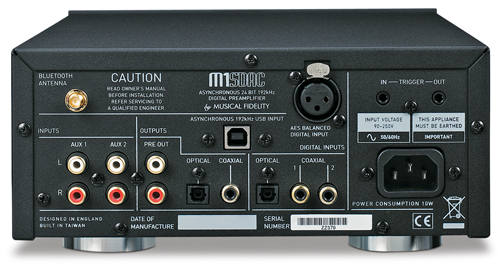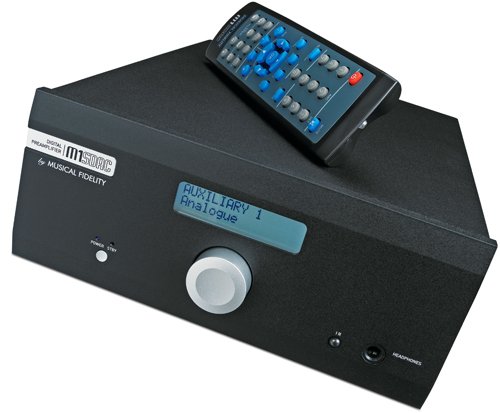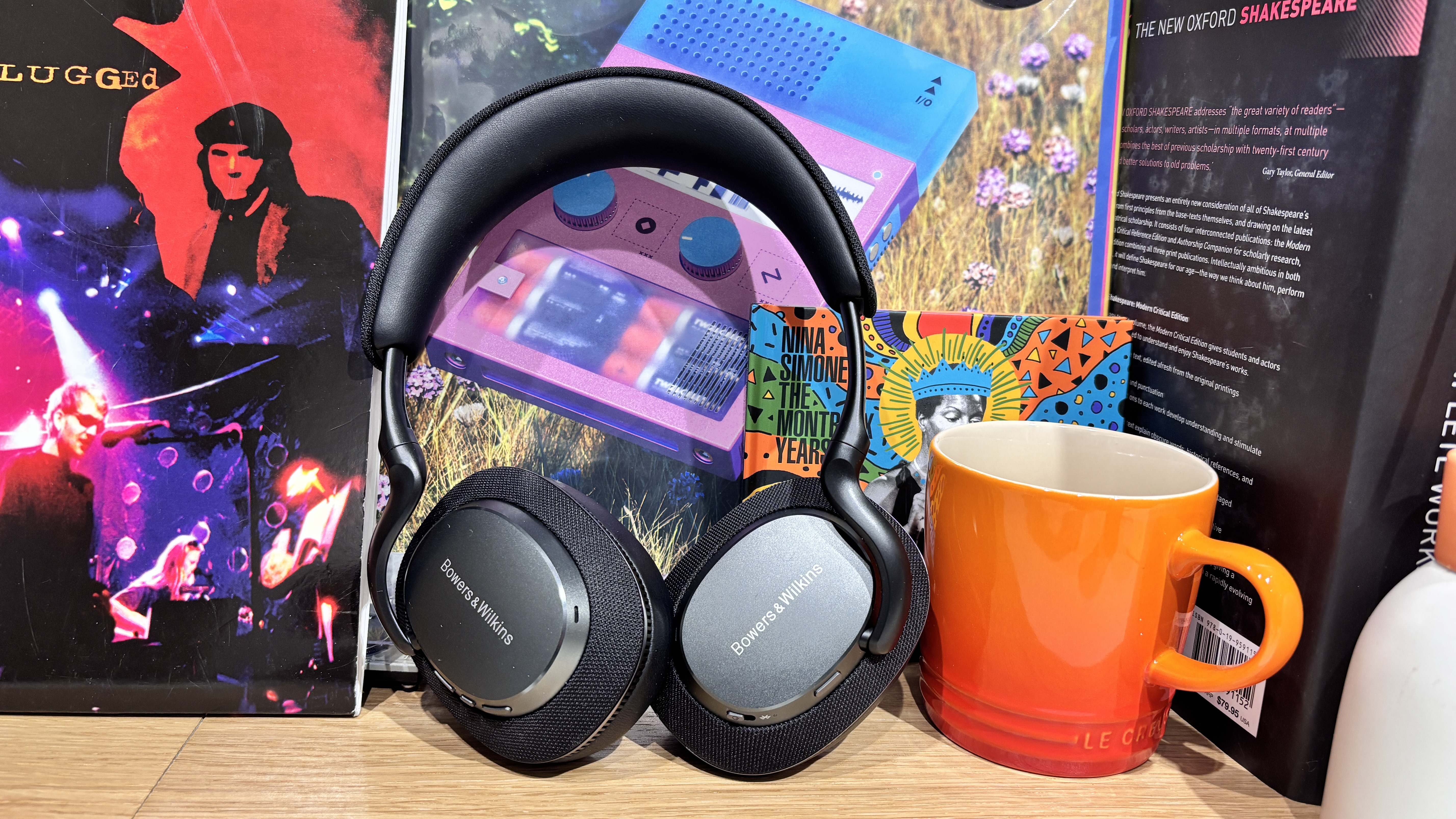What Hi-Fi? Verdict
A forward-looking product with a refined sound – but it could do with a little more sonic sparkle
Pros
- +
An open, full-bodied sound
- +
Punchy and dynamic
- +
Refinement
- +
Good range of features, including Bluetooth
Cons
- -
Lack of rhythmic drive takes away some excitement
Why you can trust What Hi-Fi?
It’s hard to pigeonhole products such as the Musical Fidelity M1 SDAC. Yes, as the name implies it’s a digital-to-analogue converter, but there’s more here.
The Musical Fidelity M1 SDAC is also a forward-looking device that recognises the fact that smartphones and tablets are viable music sources and should be celebrated rather than ignored.
To that end, it accepts higher-quality aptX Bluetooth signals, and makes a serious attempt to make them as listenable as possible.
Not that traditional hi-fi areas are ignored: this gizmo will also accept analogue signals from two line-level sources, deliver sound to a pair of headphones and drive a power amplifier directly.
So, for those that feel the need to put this product into a specific category: the M1 SDAC is a DAC/Bluetooth receiver and decently equipped preamp. Not bad going for £800, if it sounds good.
Musical Fidelity M1 SDAC: Tech specs
This is a nicely built unit. It’s finished well and has a clear enough display. That large control knob on the front panel governs the volume levels and once pushed enables a change in input.
We’d have been happier if it was a speed-sensitive volume control, though; this one is a little too slow to track big changes.
As with most modern DACs, high-resolution music streams are on the menu. The optical input is limited to 24-bit/96kHz (typical for most such devices), but the USB, coaxial and AES/EBU inputs will accept full-fat 24-bit/192kHz signals.

Many Windows-based PCs won’t stream 192kHz music through their USB output as standard, so Musical Fidelity provides USB driver software for Windows Vista, XP and 7 to make it possible. Any recent Mac should just stream the highest resolution files without issue.
Musical Fidelity M1 SDAC: Sound quality
Once we wire our MacBook to the M1 SDAC we’re pleased with the results: the results are good and solid through its asynchronous USB input. (This type of connection puts the DAC in charge of information flow – an arrangement that usually leads to a better sound.)
Listen to Nick Cave’s The Lyre of Orpheus and this DAC is right at home. The Musical Fidelity’s open, expressive presentation works beautifully here, with the passionate vocal part chiming through with real clarity. It’s a composed and fluid, avoiding the clinical, sometimes mechanical edge that some digital equipment still imparts.

That lovely midrange is underpinned by a deep, powerful low-frequency performance that gives the music a really firm foundation. That bass is rarely overplayed though, and has the speed and tunefulness to keep up when necessary.
Have a listen to higher resolution recordings such as Kate Bush’s 50 words for Snow or the Rolling Stones’ Gimme Shelter and the good news continues. The Musical Fidelity is transparent enough to show the sonic gains made by the increased resolution, and sounds notably more fluid with material such as this.
Musical Fidelity M1 SDAC vs. Audiolab M-DAC
However, despite all the good things the M1 SDAC does it’s not the most rhythmic of devices. It’s good enough at defining the individual notes of The Dead Weather’s 60 Feet Tall, but can’t convey the momentum of the song or the sense of rhythmic interplay as well as the £600 Audiolab M-DAC.
This shortcoming is less apparent when listening through the M1 SDAC’s optical input. Compared with USB there’s a loss of sonic punch and solidity, but a touch more enthusiasm when it comes to conveying timing information.
The Audiolab is still better in this respect though, and adds a little more dynamic punch to the proceedings too. Using the coaxial input mirrors these results.
Musical Fidelity M1 SDAC: Bluetooth
Move to Bluetooth and we’re impressed. Pairing is as easy as we hoped it would be, and the sound quality is decent.
In absolute terms, recordings sound less transparent than the wired alternatives, but the presentation is still good enough to allow us to enjoy The XX’s Coexist.
The production may be sparse but there’s plenty going on here with the complex rhythmic interplay between instruments and the beautifully recorded vocals.
There’s a good amount of detail on offer too, and it hangs together well. Bluetooth, particularly in aptX form, is a feature we wish more specialist manufacturers would include.
Move on to analogue sources and the M1 SDAC disappoints just a little, sounding smaller and less transparent than we hoped.
There’s still evidence of good detail retrieval and a fine handling of dynamics, but it doesn’t quite hold our attention as well as we’d like.
We think the headphone output is a good one, though. It sounds solid, meaty and in control and there’s a degree of stability and composure here that’s mighty pleasing.
Musical Fidelity S1 DAC: Verdict
There’s no denying that the M1 SDAC is a useful box. It’s thoughtfully conceived, and we’re particular fans of the Bluetooth capability (and detachable aerial).
It’s up against some mighty rivals though: Audiolab’s M-DAC might be a few years old now, but it’s cheaper at £600 and we think it delivers a more involving sound.
The Musical Fidelity counters with a more full-bodied sonic presentation, however, not to mention a more comprehensive specification that includes Bluetooth and analogue inputs. Overall, it’s well worth a look.
What Hi-Fi?, founded in 1976, is the world's leading independent guide to buying and owning hi-fi and home entertainment products. Our comprehensive tests help you buy the very best for your money, with our advice sections giving you step-by-step information on how to get even more from your music and movies. Everything is tested by our dedicated team of in-house reviewers in our custom-built test rooms in London, Reading and Bath. Our coveted five-star rating and Awards are recognised all over the world as the ultimate seal of approval, so you can buy with absolute confidence.


